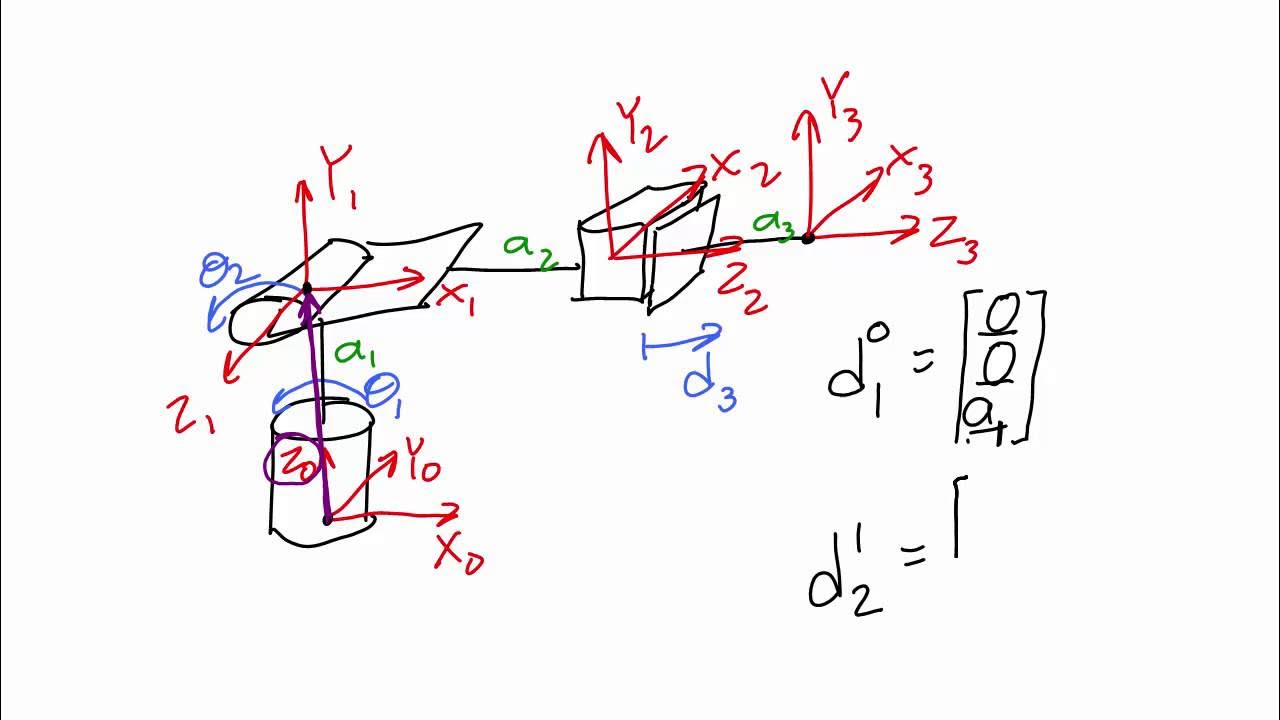Position Vectors and Displacement Vectors - Physics
Summary
TLDRThis video tutorial explains the concept of position vectors and their application in calculating displacement vectors. It starts with a 2D example, showing how to find the position vector from the origin to a point (3,2), represented as 3i + 2j. The tutorial then extends to 3D, illustrating how to determine the position vector for a point (3,4,5), expressed as 3i + 4j + 5k. It further discusses how to calculate the magnitude of a vector using the square root of the sum of squares of its components. Finally, it demonstrates how to find the displacement vector when a particle moves from point A (2,3,4) to point B (5,-2,8), by subtracting the initial position vector from the final one.
Takeaways
- 📝 Position vectors are vectors that start from the origin and point to a specific point in space.
- 📝 The position vector for a point P(3, 2) in a 2D coordinate system is represented as 3i + 2j, indicating the direction and distance from the origin to point P.
- 📝 In a 3D coordinate system, a position vector for a point P(3, 4, 5) is represented as 3i + 4j + 5k, showing the x, y, and z components of the vector.
- 📝 The magnitude or length of a position vector in a 2D system is calculated using the formula √(x^2 + y^2), while in 3D it's √(x^2 + y^2 + z^2).
- 📝 The magnitude of the position vector for point P(3, 4, 5) is √(3^2 + 4^2 + 5^2) = √(50) = 5√2.
- 📝 Displacement vector is calculated by subtracting the initial position vector from the final position vector, representing the change in position.
- 📝 For a particle moving from point A(2, 3, 4) to point B(5, -2, 8), the displacement vector is found by subtracting the position vector of A from B.
- 📝 The displacement vector from A to B is calculated as (5i - 2j + 8k) - (2i + 3j + 4k) = 3i - 5j + 4k.
- 📝 The video provides a resource for further learning with an ebook on passing math and science classes available at video.tutor.net.
- 📝 The first chapter of the ebook can be obtained for free by joining the email list mentioned in the video.
Q & A
What are position vectors?
-Position vectors are vectors that start from the origin and point to a particular point in a coordinate system. They are represented by the symbol 'r' with a vector symbol attached to it.
How do you draw a position vector for a point in a 2D coordinate system?
-To draw a position vector for a point in a 2D coordinate system, you draw it from the origin to the point of interest, using the x and y coordinates of the point.
What is the position vector for a point P with coordinates (3, 2) in a 2D coordinate system?
-The position vector for point P with coordinates (3, 2) in a 2D coordinate system is 3i + 2j, where 3i represents the x-component and 2j represents the y-component.
How do you calculate the position vector in a 3D coordinate system?
-In a 3D coordinate system, the position vector is calculated by traveling along the x, y, and z directions from the origin to the point of interest, using the x, y, and z coordinates of the point.
What is the formula to find the magnitude of a position vector in a 2D coordinate system?
-The magnitude of a position vector in a 2D coordinate system is found using the formula: √(x² + y²), where x and y are the components of the vector.
How do you find the magnitude of a position vector in a 3D coordinate system?
-The magnitude of a position vector in a 3D coordinate system is calculated using the formula: √(x² + y² + z²), where x, y, and z are the components of the vector.
What is the displacement vector and how is it different from a position vector?
-The displacement vector represents the change in position of an object as it moves from one point to another. It is different from a position vector because it is the difference between two position vectors.
How do you calculate the displacement vector when a particle moves from point A to point B?
-To calculate the displacement vector when a particle moves from point A to point B, you subtract the position vector of point A from the position vector of point B: R_B - R_A.
What is the position vector for point A with coordinates (2, 3, 4) in a 3D coordinate system?
-The position vector for point A with coordinates (2, 3, 4) in a 3D coordinate system is 2i + 3j + 4k.
What is the position vector for point B with coordinates (5, -2, 8) in a 3D coordinate system?
-The position vector for point B with coordinates (5, -2, 8) in a 3D coordinate system is 5i - 2j + 8k.
How do you find the displacement vector when a particle moves from point A to point B with given coordinates?
-To find the displacement vector from point A to point B, calculate the difference between their position vectors: (5i - 2j + 8k) - (2i + 3j + 4k), which results in 3i - 5j + 4k.
Outlines

This section is available to paid users only. Please upgrade to access this part.
Upgrade NowMindmap

This section is available to paid users only. Please upgrade to access this part.
Upgrade NowKeywords

This section is available to paid users only. Please upgrade to access this part.
Upgrade NowHighlights

This section is available to paid users only. Please upgrade to access this part.
Upgrade NowTranscripts

This section is available to paid users only. Please upgrade to access this part.
Upgrade NowBrowse More Related Video
5.0 / 5 (0 votes)





